Computex 2006: Abit is back, Biostar expands, and Thermaltake dazzles
by Gary Key on June 10, 2006 4:00 AM EST- Posted in
- Trade Shows
Abit: Intel Motherboards
Abit is launching three different product lines this summer consisting of the Max, Fatal1ty, and Guru series. The Max series is targeting the overclocking enthusiast, Fatal1ty is for the gaming enthusiast, and Guru is the general computer user. Within the Fatal1ty series are three separate product groups based upon features and price targets; Champion, Professional, and Performance.
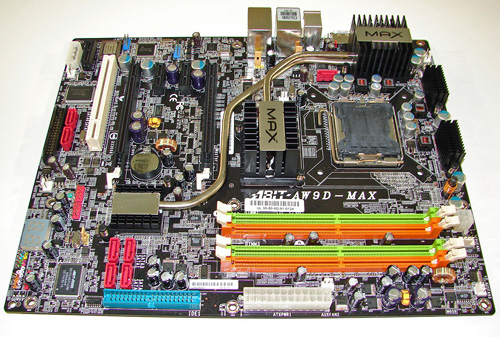
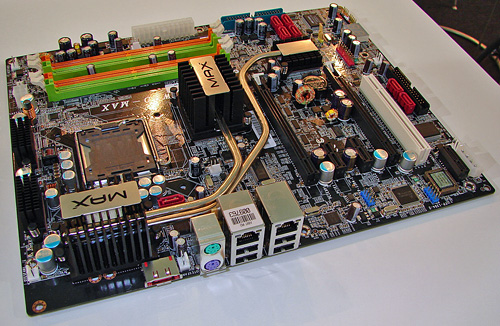
This is Abit's top of the line board featuring the Intel 975x and ICHR7 chipsets, ATI CrossFire support, silent OTES 2 cooling, OC Strips, uGuru clock, and AudioMax Technology featuring a separate riser card for the Realtek ALC882M HD codec. The memory slots will actually be colored coded black and white on the production series boards. Availability will be in early July with pricing around US $230.
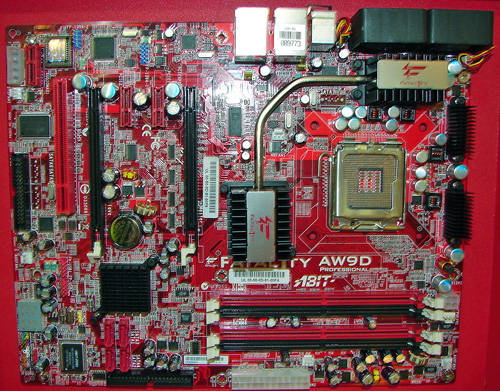
Abit's Fatal1ty Intel series features the Fatal1ty FP-A90 board with the Intel 975x and ICH7R chipsets along with Guru 2005, ATI CrossFire support, and AudioMax technology. Availability will be in July with pricing around US $215.
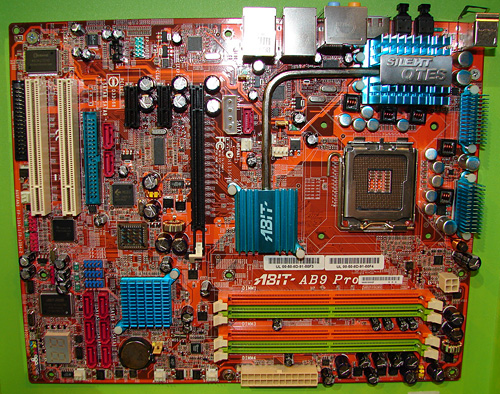
Abit's top of the line Intel 965 board is the AB9 Pro that includes two additional SATA 3Gb/s ports from a Silicon Image 3132 chipset along with one port SATA 3Gb/s and PATA (Ultra DMA 100) support from the J-Micro JMB363+ chipset. The PATA port is located in a very awkward position.
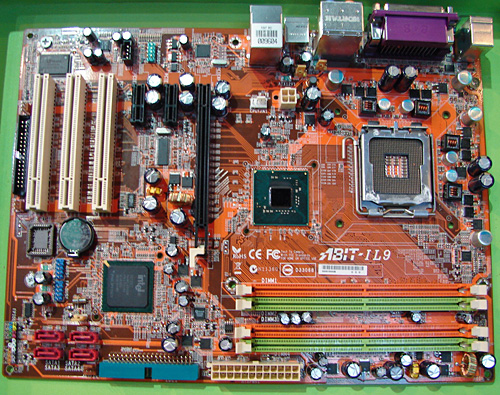
One of Abit's more budget minded Intel chipset Core 2 Duo boards will be the IL9 featuring the 946PL and ICH7 chipsets.
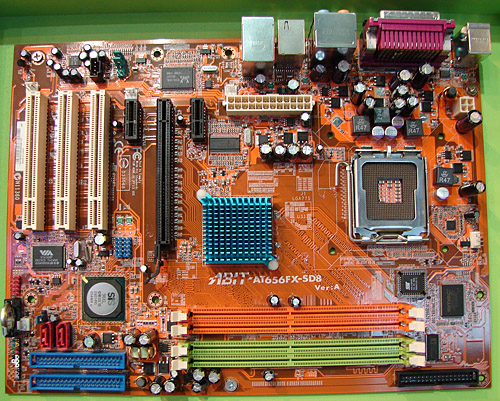
An interesting development in the low end boards that will support Core 2 Duo is the SD8 Pro that features the SIS 656 Northbridge and SIS 966L Southbridge. Expect to see this board retailing around the US $55 range and offering decent performance for a budget board.
Abit is launching three different product lines this summer consisting of the Max, Fatal1ty, and Guru series. The Max series is targeting the overclocking enthusiast, Fatal1ty is for the gaming enthusiast, and Guru is the general computer user. Within the Fatal1ty series are three separate product groups based upon features and price targets; Champion, Professional, and Performance.


This is Abit's top of the line board featuring the Intel 975x and ICHR7 chipsets, ATI CrossFire support, silent OTES 2 cooling, OC Strips, uGuru clock, and AudioMax Technology featuring a separate riser card for the Realtek ALC882M HD codec. The memory slots will actually be colored coded black and white on the production series boards. Availability will be in early July with pricing around US $230.

Abit's Fatal1ty Intel series features the Fatal1ty FP-A90 board with the Intel 975x and ICH7R chipsets along with Guru 2005, ATI CrossFire support, and AudioMax technology. Availability will be in July with pricing around US $215.

Abit's top of the line Intel 965 board is the AB9 Pro that includes two additional SATA 3Gb/s ports from a Silicon Image 3132 chipset along with one port SATA 3Gb/s and PATA (Ultra DMA 100) support from the J-Micro JMB363+ chipset. The PATA port is located in a very awkward position.

One of Abit's more budget minded Intel chipset Core 2 Duo boards will be the IL9 featuring the 946PL and ICH7 chipsets.

An interesting development in the low end boards that will support Core 2 Duo is the SD8 Pro that features the SIS 656 Northbridge and SIS 966L Southbridge. Expect to see this board retailing around the US $55 range and offering decent performance for a budget board.










27 Comments
View All Comments
Gary Key - Saturday, June 10, 2006 - link
The on-board sound on this board will be the Realtek ALC-882M that is placed on a riser card. The sound was significantly better audio quality wise than some of the 882m solutions we have heard placed on the motherboard. We also spoke with Abit about utilizing the new Realtek ALC-888 which sounded a generation better to us and that was on a $85 ASRock board the same day. We are hoping the transition to the ALC-888 will be a quick one for most manufacturers as it would suffice for about 90% of the users. The balance will want a X-FI or something else discreet.
My issue with Abit, the Product Managers agreed, is that the buyer for these boards will typically not only want a discreet sound solution but also a slot for a TV tuner card or a professional audio interface card. PCI is not dead until the multimedia companies move over to PCI-E, it is that simple and until such time, the board should have two if not three PCI slots that are not blocked, take one of the PCI-E x1 slots, combine the lanes, and give us a universal x4 slot if need be to make room but do not block this slot also. We were able to play with the 975x board before the show opened and although it was pre-production, it ran like a banshee. ;-)
xsilver - Saturday, June 10, 2006 - link
any indication of what the prices are going to be?hopefully prices will stay the same and just replace a 600w one with a 1200w one?
or if the price is going to be 2x the 600w one, who could afford it??
Gary Key - Saturday, June 10, 2006 - link
Pricing was not set yet but we would estimate in the $250~$325 range at this time. Yikes.....
emilyek - Saturday, June 10, 2006 - link
You'd think 50 engineers could rub their heads together and come up with something decent.Have the Thermaltake boys been watching 'Pimp My Ride' or something? The only decent thing in their lineup as shown is the HTPC.
Xenoid - Saturday, June 10, 2006 - link
The Thermaltake cases were all very nice (and I'm sure very expensive), but is it just me or do the LAN-style carry cases still look ridiculous? Same with that big box for 2 systems in one..I'd rather just have 2 full-towers..they'd take up a lot less room and cost less too.toyota - Saturday, June 10, 2006 - link
what a waste of ram. i guess this means we will start seeing 1 gig on next gen cards that might actually utilise it.JarredWalton - Saturday, June 10, 2006 - link
We've already got the GX2 with 1GB, though granted that's really 2x512MB. Vista may actually be able to use the GPU RAM for lots of other things, though - that's the theory anyway. Imagine, no longer getting the slow background refresh when Windows decides to swap some of that information out of RAM and into the page file....